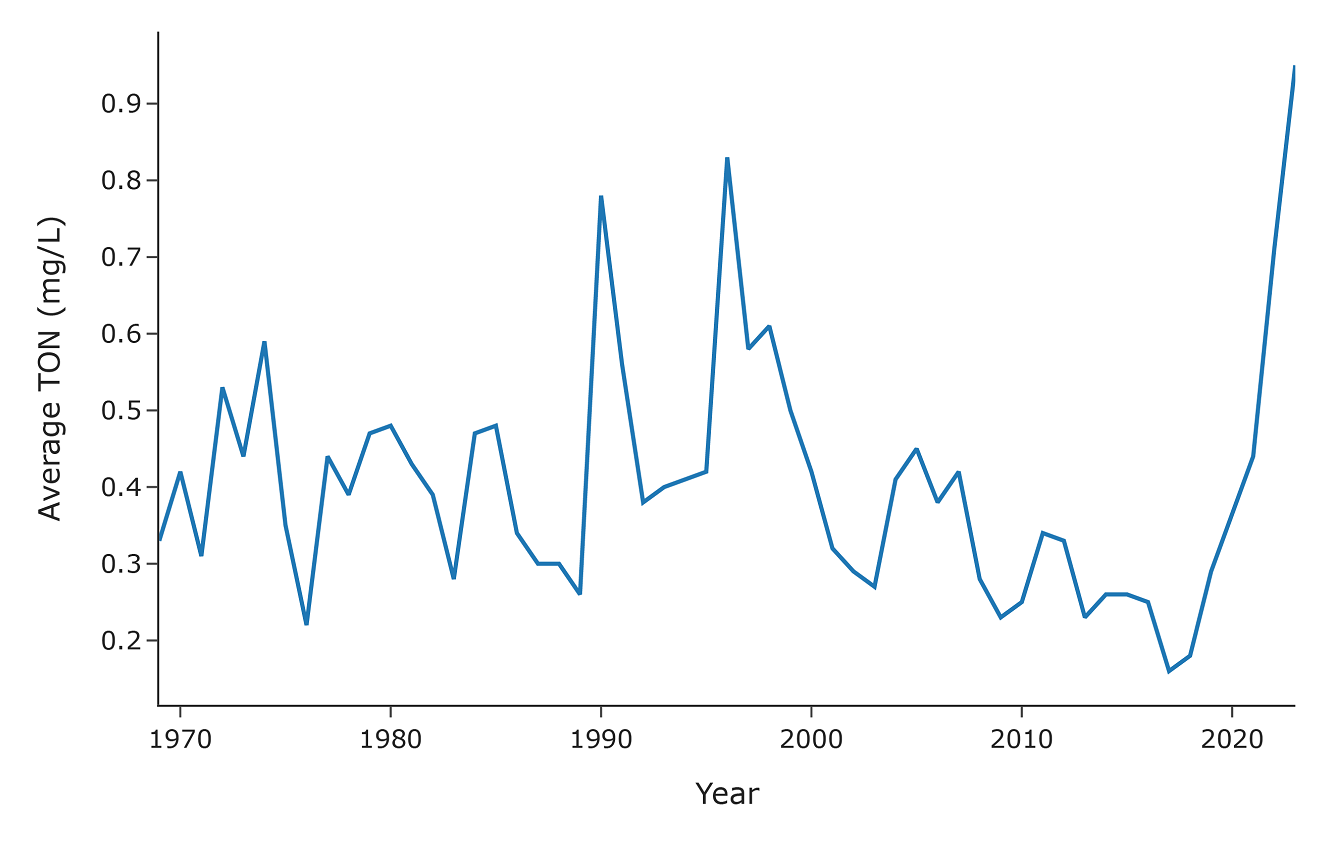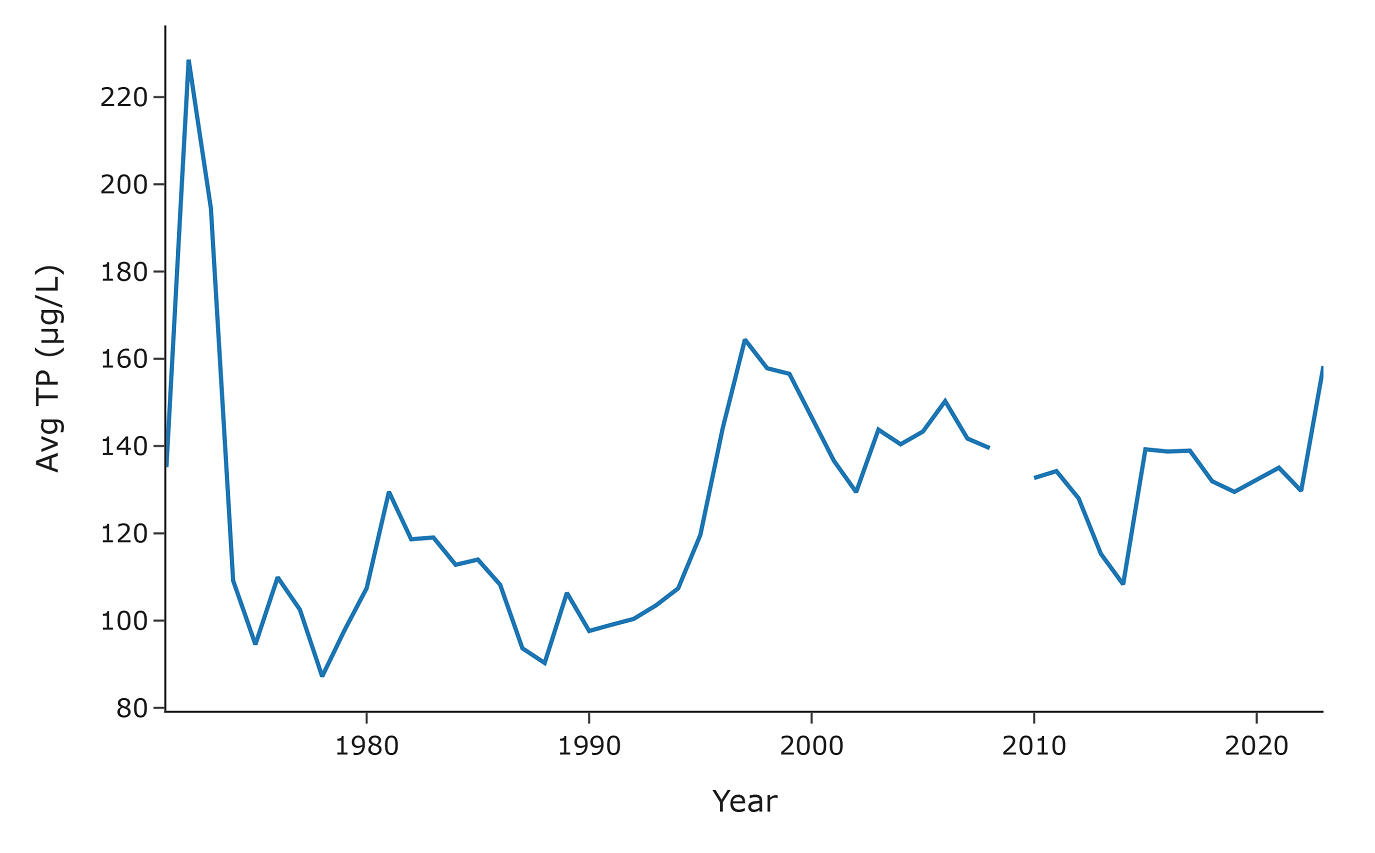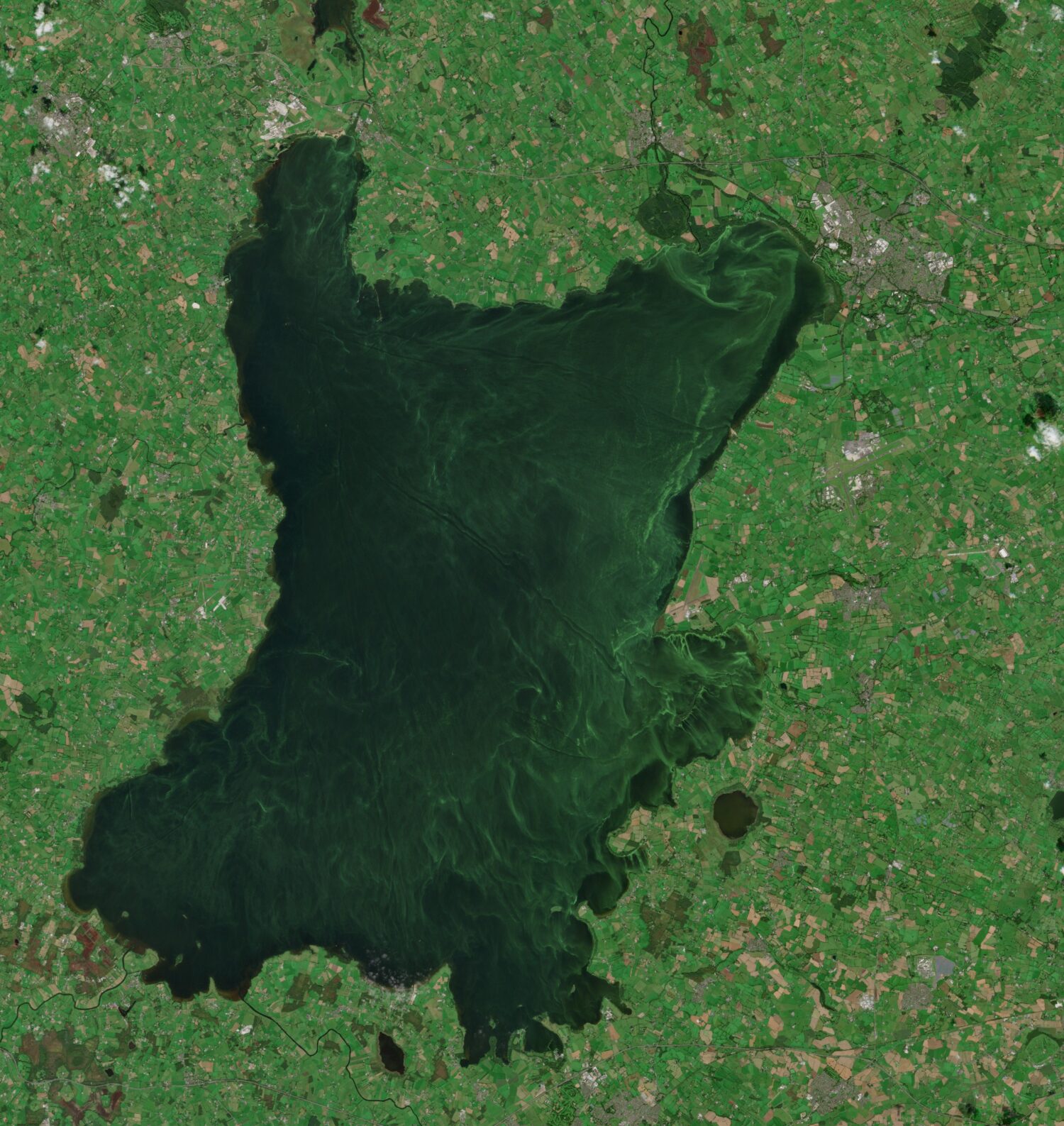Blue-green algae, or cyanobacteria, are gaining increasing notoriety in Northern Ireland (NI) and worldwide. Algal blooms have become renowned for devastating areas of natural beauty globally and affecting quality of life of those in the surrounding area. Locally, in Northern Ireland, the summer of 2023 and 2024 saw algal blooms in Lough Neagh drawing large-scale attention…
The Lough Neagh Algal Bloom
Lough Neagh is the largest lake in the UK and sits in the centre of the Neagh Bann river basin district bordering five out of six NI counties. In the summer of 2023, and again in 2024, it experienced large-scale public attention due to algal blooms. This has led to questions over the safety of the water supply and ecological status of NI lakes. This was particularly concerning as Lough Neagh is the source of approximately 50% of Northern Ireland’s raw water. Additionally, Lough Neagh supports other industries such as eel fishery as well as sand and gravel extraction. However, the Lough is also used for sports and recreation including boating and water sports.
Under the UK Environment Act 2021, NI embarked on a journey towards environmental sustainability, developing a draft environment strategy in 2022 including setting targets for environmental issues such as water quality. In 2019, the Nutrient Action Programme Regulations (Northern Ireland) 2019 (NAP) supplanted regulations governing chemical substances found in popular fertilizers (phosphorus and nitrogen compounds). By broadening its scope beyond nitrates to encompass phosphorous regulation, the NAP extends monitoring capabilities and understanding of nutrients in NI water bodies. In 2020, a consultation to inform a new River Basin Management Plan (RBMP) identified Lough Neagh to be in poor status with bad ecological potential prompting new measures to address water quality across NI. However, Lough Neagh is exempt from the objective for “all water bodies in NI to achieve a status of ‘good or better’ by 2027”.
Further, the Department of Agriculture, Environment and Rural Affairs (DAERA) released The Water Framework Directive Statistics Report addressing the status of water bodies in NI and adding new priority chemical substances to the monitoring requirements.
In July of this year, the Department of Agriculture, Environment and Rural Affairs published the Lough Neagh Report and Action Plan. There have been questions regarding the ownership of Lough Neagh; presently the rights to the bed of the lough are held by the Shaftesbury Estate. However, there have been calls for the lake to be brought under public ownership for over ten years. Andrew Muir has stated that the Lough Neagh Report and Action Plan primarily focuses on “water quality issues in the lough, and so in terms of ownership of the bed and soil that is not largely within the scope of the report.”
Blue-green algae
Despite being known for extensive algal blooms in oceans and lakes, blue-green algae are found in nearly every habitat, from freshwater and marine aquatic habitats to terrestrial forests and soil, even in extreme hydrothermal vents in the deep ocean. Blue-green algae are ancient photosynthetic organisms. During photosynthesis, organisms uptake light and carbon dioxide from the environment to generate energy and release oxygen and water. Photosynthesis is well known to be performed by plants and trees however, the origin of photosynthesis on Earth is widely thought to rest with an ancestor of cyanobacteria.
50% of all primary production globally is due to marine algae so cyanobacteria play critical roles in removing carbon dioxide from the atmosphere and generating most of the oxygen we breathe. Primary production is the synthesis of organic compounds from environmentally available carbon dioxide. Photosynthesis is a key method of primary production, therefore primary production is often a metric for photosynthesis. They are also thought to have triggered the Great Oxygenation Event by photosynthesising approximately 2.4 billion years ago. This action changed the atmosphere’s composition to include oxygen and allowed more complex organisms like humans to develop.
Our relationship with cyanobacteria has always relied on balance. They are the reason our atmosphere contains oxygen but they also can endanger habitats and contaminate drinking water. This is becoming even more notable as our climate changes and the prevalence of blue-green algal blooms is increasing worldwide.
Algal Blooms
Algal blooms are a phenomenon experienced globally and are characterised by a rapid accumulation of algae. Blooms can occur due to a variety of causes, such as eutrophication, and have varying harmful impacts on human and animal health, ecosystems, and industries such as tourism and fishing. Algal blooms can range in severity and it can be difficult to define when algae growth is classified as a bloom. Blooms can be harmless or harmful depending on the algae composing the bloom. A particularly recent example is the algal blooms on Lough Neagh, the largest lake in the UK. In the summer of 2023, the lake was overcome by extensive blue-green algae accumulation.
Causes
Algal blooms can have a variety of causes, such as sunlight, excessive nutrients, human-related activities and the changing climate. Below are some of the contributing factors for algal bloom generation.
Excessive nutrients
Excessive nutrients is a contributing factors to many algal blooms. Blue-green algae uptake many of their essential nutrients from the environment. These are nutrients they cannot synthesise themselves and are critical for their growth and survival. In the natural environment, nutrients, such as nitrogen and phosphorous are limited and algae growth is restricted. However, if there are excessive nutrients in the environment, algae growth is no longer restricted and blooms can form. The nutrients primarily associated with algal blooms are nitrogen and phosphorous.
Excessive nutrients in aquatic environments can be due to runoff from agriculture, wastewater treatment and industry. This is known as nutrient pollution and can lead to eutrophication. In eutrophication, nutrients build up leading to a rapid accumulation of algae. Consequences of eutrophication include oxygen-starved environments and fish death. Nitrogen compounds, such as nitrate, and phosphorous are known to be associated with eutrophication and are found in popular fertilizers, sewage and manure. Major nutrient pollution is associated with increased rainfall as rain washes fertilizer and waste into water bodies.
The changing climate
When considering the causes of algal blooms, the changing climate cannot be ignored. Globally, warmer water temperatures are key in algal blooms becoming increasingly frequent and longer-lasting. Warmer waters are more favourable to algal growth and also lead to increased thermal stratification. Stratification is where layers form in a water body and mixing between water of different temperatures and depths is reduced. This reduction in mixing can lead to very warm surface waters, perfect for rapid algal growth.
Sunlight
Cyanobacteria are photosynthetic so light is essential to generate energy for their growth and survival. We can view it as fuel or food for these organisms. Therefore, if it is sunny for an extended period, the incidence of algal blooms is likely to increase. Sunlight as a contributing factor to blooms is powerful when in combination with other factors.
Ecological change
The ecosystem requires a careful balance of species composition. For example, zebra mussels are filter feeders and an invasive species in NI lakes and rivers. Through their role as filter feeders, zebra mussels often increase the water clarity and may alter nutrient ratios, nitrogen to phosphorous ratios are of particular interest for algal blooms. Zebra mussels and blue-green algae have a complex relationship as different concentrations of phosphorous resulting in different rates of accumulation of blue-green algae.
Human activities
Human activities are integrated with the other causes of algal blooms mentioned, such as nutrient pollution. Human activities that can lead to increased likelihood of algal include changes in land use, dam construction and deforestation. Furthermore, changes in land management and development frequently result in a degradation of water quality which is linked to increased prevalence of algal blooms.
Impacts
The impacts of algal blooms can be wide-reaching, affecting diverse areas of society and the environment. These include human and animal health, ecosystems and industries such as tourism and fishing.
Environmental Impacts
The impact of algal blooms on ecosystems can be devastating. Algal blooms in the surface waters can block sunlight penetrating deep into the water, this can seriously impact plant growth beneath the surface waters resulting in death and removal of species from ecosystems. Further, an increased algal growth rate means an increased demand for resources such as oxygen in the water body. This often leads to an intense reduction in oxygen in the environment. These oxygen-starved conditions are known as anoxic conditions and are frequently associated with the death of fish and other organisms reliant on oxygen from the water.
Human-health Impacts
Algal blooms can have harmful effects on human health mostly due to the release of cyanotoxins into the environment. Cyanotoxins are harmful chemicals released by cyanobacteria. These toxins can be lethal to wildlife, livestock, and pets, and can cause illness in humans. Symptoms of cyanotoxin exposure can include abdominal pain, headache, sore throat, vomiting, diarrhoea and even pneumonia. Ongoing research into human health impacts has found that 95% of cyanobacteria can produce a chemical called Beta-N-methylamino-L-alanine (BMAA). There is a potential link between BMAA and neurodegenerative diseases such as Alzheimer’s, Parkinson’s, and dementia, although further evidence is required to confirm this relationship.
Animal-health Impacts
It is important to note that animals, much like humans, can be adversely affected by algal blooms. Cyanotoxins can lead to a range of symptoms, including excessive drooling and foaming at the mouth, loss of appetite, stumbling, and abdominal tenderness. It is highly recommended that pet and livestock owners take necessary precautions to ensure that their animals do not come into contact with algal blooms as they are at higher risk of death from exposure. In fact, in 2021, there was a large wildlife mortality event in the USA caused by an algal bloom. This single event resulted in at least 2715 animals becoming ill with 92% of those animals dying, mainly bats.
Industry Impacts
Algal blooms can have a significant impact on industry particularly industries which are economically reliant on water bodies such as water providers, fishing, aquaculture and tourism. These blooms frequently lead to a decline in water quality causing practical issues for water providers and communication challenges with the general public. In extensive algal blooms, the water can become oxygen-starved causing large-scale fish death and presenting issues for fishing and aquaculture industries. Tourism and recreational activities are frequently severely impacted by algal blooms leading to a reduction in visitors which can be detrimental to local economies.
Average Total Oxidised Nitrogen (TON) in Lough Neagh over 50 years

Average Total Phosphorous (TP) in Lough Neagh over 50 years

Over the last 50 years, the average total oxidised nitrogen (TON) levels in Lough Neagh have risen and fallen periodically (figure 1). A decrease in the average TON was recorded from 0.42 mg/L in 2000 to a low of 0.16 mg/L in 2017. However, since 2017, the average TON levels in Lough Neagh have skyrocketed to a recorded high of 0.95 mg/L in 2023. Increases in TON are associated with increases in the frequency of algal blooms. In contrast, total phosphorus (TP) levels in Lough Neagh over the years tell a different story. Between 1974 and 1995, TP levels in Lough Neagh hovered between 129.5 ug/L and 87.2 ug/L. However, after a rise in TP between 1990 and 1997, TP in Lough Neagh resided at a higher level between 108.32 ug/L and 164.41 ug/L. In 2023, there was a moderate uptick of around 30 ug/L from the year before.
To conclude, algal blooms are becoming increasingly notorious for their harmful impacts on the natural environment, human and animal health and industry in Northern Ireland and worldwide. Algal blooms in Lough Neagh have gained prominence however, this is a widespread issue across water bodies Northern Ireland. The upcoming Lough Neagh Report and Action Plan aims to address water quality issues in the lake and will hopefully lead Lough Neagh to a brighter future.
Issues for consideration
- Lough Neagh is one of many lakes in NI in poor status. Will an algal bloom action plan extend beyond Lough Neagh to address similar concerns in other NI lakes?
- How does the nitrate derogation policy in NI impact nitrate levels in waterbodies? And will this be evaluated due to the levels of eutrophic chemicals in NI lakes?
- Algal blooms are a persistent challenge for lakes in Northern Ireland. What action is being taken to improve the ecological status of the lake?
- What are the long-term implications of persistent algal blooms in Northern Ireland lakes? And how can management strategies be coordinated for long-term management in Northern Ireland?
Useful links
- RaISe, Topical digest: Algal blooms in Lough Neagh (2024)
- RaISe, An overview of algal bloom in Lough Neagh (2023)
- RaISe, Management of Algal Blooms (2024)
- RaISe, Zebra Mussels in Northern Ireland (2023)


